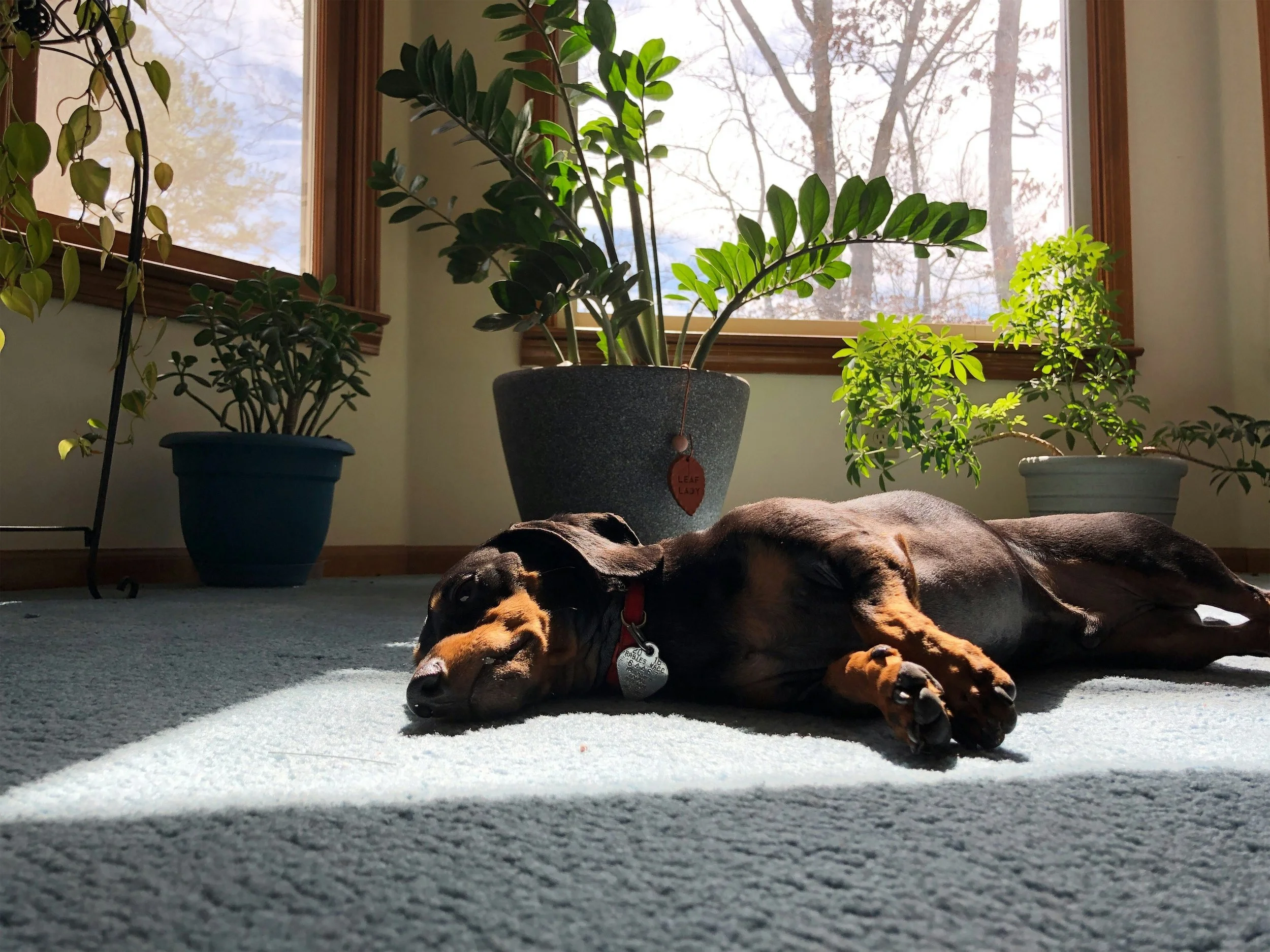Dogs and Houseplants: What’s Safe, What’s Toxic, and How to Keep Both Happy
For many of us, pets and plants are part of the family. But what happens when your love for greenery collides with your dog’s curiosity?
Spoiler alert: not all houseplants are safe for dogs—and some can cause serious health problems.
Let’s break down what the research says, which plants are dangerous, and how to create a pet-safe indoor jungle.
🧠 Why Dogs Eat Plants in the First Place
It’s not always because they’re hungry. According to veterinary behaviorists, dogs may chew on plants due to:
Boredom or stress
Teething (in puppies)
Instinct (dogs in the wild eat grass occasionally)
Taste or smell curiosity
A 2008 study published in Applied Animal Behaviour Science found that plant-eating is actually common and usually not linked to illness, but it becomes dangerous when toxic plants are involved.
☠️ Toxic Houseplants for Dogs
Here are some of the most common poisonous plants found in homes, as listed by the ASPCA and Pet Poison Helpline:
1. Sago Palm
Highly toxic—just a few seeds can be fatal.
Causes vomiting, liver failure, seizures, and death.
2. Peace Lily
Causes irritation, excessive drooling, difficulty swallowing, and vomiting.
3. Pothos (Devil’s Ivy)
Contains calcium oxalates that can cause mouth irritation, drooling, and vomiting.
4. Snake Plant
Mildly toxic but can lead to nausea, vomiting, and diarrhea.
5. Aloe Vera
Healing for humans, harmful to dogs. Can cause lethargy, vomiting, and diarrhea.
6. Dieffenbachia (Dumb Cane)
Causes oral swelling, pain, vomiting, and difficulty breathing.
✅ Dog-Friendly Houseplants
According to the ASPCA and horticultural studies, these plants are considered safe for dogs:
1. Spider Plant
Hardy, non-toxic, and great for air purification.
2. Areca Palm
Aesthetic and completely safe for pets.
3. Boston Fern
Lush, pet-safe, and easy to grow indoors.
4. Calathea (Prayer Plant)
Vibrant and safe for curious dogs.
5. Peperomia
Compact, colorful, and non-toxic.
6. Bamboo Palm
Adds tropical flair with no toxic effects.
🐾 Tips to Keep Dogs and Plants Peacefully Coexisting
Place plants out of reach. Use shelves, hanging baskets, or plant stands.
Train with positive reinforcement. Reward dogs for ignoring plants.
Provide chew alternatives. Keep toys and dog-safe chews accessible.
Use deterrents. Bitter sprays can discourage nibbling.
Know the signs of poisoning.
Vomiting
Lethargy
Drooling
Tremors or seizures
Loss of appetite
If you suspect ingestion, contact your vet or ASPCA Poison Control immediately: 1-888-426-4435
🔍 Trusted Resources for Plant Safety
Before you bring a new plant into your home, use these trusted, research-backed sites to check whether it’s safe for your dog:
🟢 ASPCA Toxic and Non-Toxic Plant List
👉 https://www.aspca.org/pet-care/animal-poison-control/toxic-and-non-toxic-plants
🟢 Pet Poison Helpline
👉 https://www.petpoisonhelpline.com/poisons/
🟢 UC Davis / University of California Plant Safety Database
👉 https://ucanr.edu/sites/poisonous_safe_plants/
🟢 Plants for a Future (PFAF)
❤️ Final Thought
Your home should be a safe haven—for both your dog and your Monstera. With a little planning and plant-savvy, you don’t have to choose between your pup and your plant aesthetic.
